Anyone familiar with psychiatrist Bessel van der Kolk’s bestseller The Body Keeps the Score (2014) will recognise the ghost of his title in Lucia Osborne-Crowley’s My Body Keeps Your Secrets. His book is an essential text for understanding the physiological changes wrought by trauma and the techniques that work to recalibrate body, mind and brain in its aftermath. Through a blend of memoir and reportage, Osborne-Crowley explores the same subject while indicating her own emphasis: the experience, and grammar, of shame.
Staying close to her own experiences, while drawing on her background as a journalist to share the stories of other women and non-binary people affected by trauma, Osborne-Crowley argues that shame is “a story of structural discrimination” that is devastating for survivors of abuse. She quotes Meera Atkinson (Traumata, 2018) on shame as something “transmitted by shameless acts, acts in which one person’s avoidance of shame demands another carry it”. The body holds onto the violence perpetrated against it, while shame prevents survivors from seeking the support to heal. This often wreaks further damage: chronic pain, for example, or autoimmune illnesses.
Lucia Osborne-Crowley is unflinchingly honest about the “long story of intrusions”, physical and emotional, that have made up the life of her body. The book is not only about her experiences, but also those of her interview subjects (in total, she spoke to more than 100 people for this project) as she strives to paint a portrait of “the whole life that is lived” in the aftermath of shame: self-harm, eating disorders, substance abuse, endometriosis, abusive relationships, medical negligence, vaginismus and chronic pain. I spoke to her over Zoom in late September to discuss the book and its implications.
Jessica Payn: My Body Keeps Your Secrets is your second book. Why did you write it and who were you writing it for?
Lucia Osborne-Crowley: My first book, I Choose Elena (2019), was a straight memoir about a sexual assault: something that happened to me when I was 15 and that I didn’t speak about for 10 years. In that time, I got very sick, both physically and psychologically. I was experiencing really intense symptoms of post-traumatic stress disorder (PTSD), except I didn’t know that that’s what it was because I hadn’t told anyone about it. I also developed Crohn’s disease and endometriosis, both of which doctors say can result from physical abdominal trauma. When I finally worked this out, 10 years after my rape, I started getting a lot of treatment. I started going to doctors and treating my actual trauma as well as my physical health conditions, and I learnt the most incredible things about the connections between trauma and health and about trauma itself. My first book was about that. After publishing it, I wanted to try and widen the scope of that research a little bit.
What I learned from all the doctors that I spoke to is that it doesn’t actually matter what the initial experience of trauma is in terms of the way the brain registers it: there is no scale. It’s a structural thing, where we are always taught to tell ourselves that someone has it worse. But actually, anything that’s traumatic, anything that makes us feel like we’re in danger, anything that is invasive, is registered by our brain in the same way. We have the same symptoms, no matter what the initial event is. It felt important to me to communicate that, so I thought the best way to do that would be to go back to my more traditional journalism training and speak to lots of other people about their relationship with trauma and their bodies, and about how trauma has been stored in their bodies: to see if what these doctors and experts had told me rang true for them, to see if I could give a more comprehensive picture – something that more people could relate to.
That’s what this book is. I wrote it so that I could reach out to loads and loads of people who have really different experiences of the world and bring all their stories together as a way of saying “all of our stories are different, but the impacts are shared and we’re kind of all feeling them at the same time”. I wanted to write something that built more of a sense of community than my first book, which was just about me and told a story with atypical elements. I also think it’s really important to talk about the greyer areas and those elements of trauma that we’re even less able to recognise.
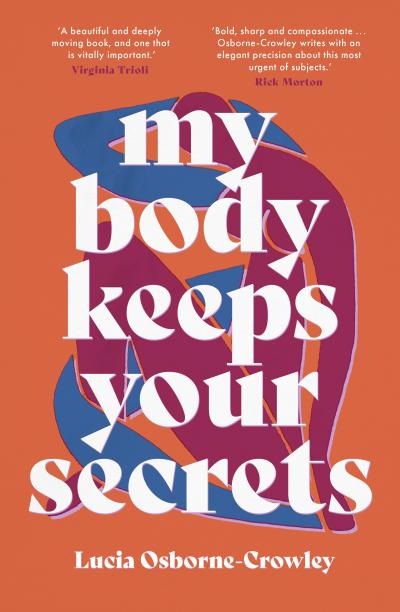 That was my main purpose in writing this – I wanted to bring more people into the conversation. I wanted to write something that more people would see themselves in. So, to answer your second question, which was "Who did you write this for?", that’s the answer. I wrote this for anyone who has experienced trauma and the shame that is often associated with PTSD symptoms – and who might not have the tools to recognise that that’s what those things are – to see some part of their experience reflected back in this book.
That was my main purpose in writing this – I wanted to bring more people into the conversation. I wanted to write something that more people would see themselves in. So, to answer your second question, which was "Who did you write this for?", that’s the answer. I wrote this for anyone who has experienced trauma and the shame that is often associated with PTSD symptoms – and who might not have the tools to recognise that that’s what those things are – to see some part of their experience reflected back in this book.
The “greyer areas” are something you also talk about in your introduction: “I want to move on from the men we call monsters and start talking about the greyer space. The smaller acts of shame transmission.” How do we approach a definition of this greyer space? What are we doing in recognising it?
It’s so hard… In one part of this book, I say that language is one of the most important things and we need to find a way to give language to things – Maggie Nelson talks about this a lot. In The Argonauts (2015), she says “I believe that giving language to things sets us free”, but her partner Harry says, “No. Putting words to things imprisons them.” There’s an element of that tension where I really believe that talking about things and finding words for things is really healing, but on the other hand, when things don’t fit easily into the language we already have, that can make people think their experiences are excluded. And that’s really tricky.
I find trauma a really useful concept for covering all of the grey areas. The more I learn about it, the more I learn that it covers so many different experiences. I think it’s a great umbrella term for understanding the greyer spaces and understanding how they affect us, while we’re working towards having better language for those greyer spaces.
One of the book’s most powerful messages is insistence on our embodied selves: it’s a fact that we try desperately to escape, the inextricability of the mind from the body, but the book is very clear about how trauma “show[s] up on the flesh” – how it permanently changes the body and the brain’s chemistry. It led me to read The Body Keeps the Score to which this book is a kind of sibling. I wanted to ask what it was like to discover these deep links?
I always thought that by ignoring my assault I could erase itIt was such an “aha!” moment for me – or series of moments. Because I had said nothing about my rape for ten years. It’s not like I read The Body Keeps the Score and was immediately like, “That’s me”. It was a series of different moments leading up to the realisation that, “Oh, this thing affected me”, even though I was determined not to let it affect me. That’s what I think is so interesting about this is that we are taught, especially as women and people of marginalised genders, that the best way to demonstrate courage is to try to overcome things and not let them affect us. It’s really valorised; I certainly valorised it myself.
I always thought that by ignoring my assault I could erase it, essentially. But what Bessel van der Kolk writes in The Body Keeps the Score is that this doesn’t actually work. If you look at the way the brain responds to trauma, it triggers a fight-or-flight response. If you are unable to calm yourself down and regulate yourself after trauma, then your brain will engage this fight-or-flight response all the time – whenever you have anything that triggers a memory of the thing you’re trying not to think about. When that is constant, it has a very physical effect on the body. It breaks down the immune system; your brain shuts down all “non-necessary functions”. Anything that’s not necessary to running away gets paused. It stops working and then has to start up again, and that is really physically stressful for an organ.
What I love about books like The Body Keeps the Score is that, if this had all been said to me in a conversation, my defences would have gone up. I would have said, “No, no, this doesn’t affect me, I can’t deal with this conversation.” But something different happens when you’re reading something, I think. This is why books are so powerful: you’re communing with an idea or a feeling in a way where you’re not expected to respond, and I think that’s why that book was so important to me – because I could just sit with it. There’s something so safe and calming about books; they’re always the thing for me that opens up new parts of the world. When I’m in my safe space I’m more open to new ideas that otherwise would scare me.
I think that’s a really interesting way to think about reading. It’s a distinctive aspect of this book that you write through your other writers, like Leslie Jamison, Deborah Levy, bell hooks and Sally Rooney. The book is even written within a structure that’s borrowed from Chanel Miller. It makes it feel very much like a conversation. Why did it feel important to include those other writers?
That’s a really interesting question because we went back and forth on this a lot. When I first wrote this manuscript – and I think the same thing happened with I Choose Elena – I relied too heavily on other writers; it allowed me to avoid my own voice a bit. So I pulled it back a lot, but I also did fight for the inclusion of some of those passages for the reason you’ve just said. I wanted it to feel like a conversation with other writers. In terms of wanting this to be a part of a broader community, it was also a way of bringing in different experiences. I put call-outs to people who wanted to be interviewed, but I would never approach someone and say “I would like to talk to you for this book” because I wouldn’t want anyone to feel like they have to talk about this stuff. So sometimes I would include other writers as a way to bring in stories that didn’t show up in my own interviews. It felt important to me to have those writers talking about their experiences in their own words.
I really hope that we got the balance right eventually. I wanted those things to be included because I can’t overstate how important it was to me to read other people’s writing when I was really in the throes of processing this trauma. As I was just saying, sitting with a book is the safest place in the world for me, and reading someone who had put themselves on the page and who had been vulnerable is what gave me strength.
I’m often naturally quite introverted and conversations are much harder for me than something like reading and writing, which I can do on my own. I don’t feel I ever would have built myself up to having conversations with these interviewees, for example, if I hadn’t first had these conversations with these pieces of writing where I could sit there and take as much time as I needed to process things. I wanted both of those things to be in there if that makes sense – the communing with books and then being able to commune with other people.
Yes, and I think for anyone else who’s struggling to articulate or to talk to other people about these kinds of experiences, those other writers are invitations to further reading – they’re very much portals into this community and these conversations. What you were saying about language being both a prison and a freedom made me think about the paradox around bodies and trauma. I think the book is really eloquent on the subject of the body as a prison: it’s “the body we are forced to keep, the body we have to continue living in through every nightmare.” But then The Body Keeps the Score makes you aware of how much our body offers us the chance to heal. I was wondering what your thoughts are on that?
We have one body and it has seen everything. It remembers everything.That’s such an interesting connection to make – this idea of language being a prison and a way to feel free and I think absolutely the same is true of the body. On the one hand, it is useful for us to understand how our body stores the experiences we have, and how that affects us. We have one body and it has seen everything. It remembers everything. But as you say, the other side of that science, which is even more useful, is that there are things we can do about that, and in fact, even though the body is this perennial witness, there are so many ways that it can heal and reprocess those memories. It is really importantly both things because it is one body: we can't run away from it, we can't actually transcend it, we have to acknowledge what it has seen, but by doing that, it also becomes a vehicle of freedom because it is so good at healing. In that way, it is incredibly dynamic.
We now know about brain plasticity and we can completely rewire our brains and have a different relationship to pain and a different relationship to fear. We can calm down our nervous system in so many ways: yoga, EDMR (Eye Movement Desensitisation and Reprocessing) and so many kinds of hands-on psychoanalytic therapy that deal directly with trauma. Your body can make a full recovery from this kind of thing. So as long as we recognise what the body has been through, we can completely transform it and use it as a vehicle towards freedom and healing.
Shame is one of the huge topics of this book, and I wanted to talk about the shame that is shared by “women and non-binary people all over the world”. We are all susceptible to shame, so why is shame different for people of marginalised genders?
Shame is so interesting because it’s not a concept that we understand very well as a society. I didn’t know anything about it until a couple of years ago. I think the best way to express it is that it’s the opposite of guilt. Guilt is an internal feeling: “Here are my values. I’ve done something that doesn’t align with those values. I want to make amends.” It’s a very productive emotion and it’s about who we are as people and what we believe in. Shame is completely inorganic. It’s put onto us by others. It’s a societal construct. It has nothing to do with what we actually believe, so sexual assault is a good example of this: if you’re a victim of sexual assault, you come away thinking “I’ve done something wrong”. One of my strongest beliefs is that if you’re a victim of sexual violence, you’ve done nothing wrong – so my shame doesn’t align with my values at all.
Even though we all experience shame in the same way, there are people whom society shames more than others. One of the shame researchers I rely on a lot says that shame comes, in part, from being cast out from society: it’s about rejection or alienation. I think that’s why shame is so structural: it’s the group saying, “Here’s what we want you to be, and you have failed.” So society says: “We want gender to be binary and if you don’t fall into those categories, then we will shame you for it.” It’s the same with society telling you what your body is supposed to look like and how thin you’re supposed to be.
We feel shame as if it’s personal, but it’s actually not personal at all. It’s completely structural. So even though we all feel shame, and I’ve been asked a few times about male shame – there is a lot of very toxic male shame that comes with masculinity – people of marginalised genders are forced to feel it a lot more because there are a lot of things about us that society tells us we should fix or change. That’s what shame tries to get us to do: it tries to get us to conform. It’s about making everyone the same.
This book is very much written in the context of the pandemic, in which, you write, “everyone has become acutely aware of their bodily functions”. It made me think of Johanna Hedva’s Sick Woman Theory (2020), in which they write about how the body is “defined by its vulnerability, not temporarily affected by it”. It’s a realisation more people came to during the pandemic, but do you think that awareness will last?
The pandemic created a cultural understanding of illness that is quite new
There are people in my life who have never, ever had to cancel a plan because of their health. Now, all of a sudden, everyone has had to cancel their plans – whether they get sick or not. The pandemic created a cultural understanding of illness that is quite new and it made me, as a disabled person, feel much more understood by the people around me. I’m obviously not saying that it’s a good thing that this happened, but this question of whether the awareness carries on is interesting because I found that people were talking about sickness and vulnerability differently. I think two things could happen: that could continue to be the case and we continue to make more accommodations for people who have illness in their lives, or we do the thing that shame teaches us to do, and pretend it never happened.
In narrative terms, one of the aspects of the book I found really interesting was the way you captured the stories of those you interviewed: you use free indirect style, rather than dialogue. How and why did you decide to write the book in this way? How did the book become “a non-fiction novel” in your own words?
I love that question because I thought about this a lot and I tried versions of both. In the end, what I landed on is what I love to read the most, which is long-form non-fiction that uses fiction techniques. Some people call this “literary reporting” or “narrative non-fiction”.
I think if you use straight dialogue, more of a Q&A, you are sacrificing some of the tools that you can use to really hold people in the story. I wanted these people to feel like characters as much as interview subjects. I think it’s really hard to do well, but I wanted at least to try.
You broach the topic of the ethical position of the journalist: the question of how much scope there is to intervene, or reveal your proximity to your subject. “Am I just here to observe,” you ask, “to render this problem into something concrete without intervening in this moment. Is that all journalism can do? Is it enough?” Do you have answers to these questions, or is it important that they remain open?
I thought about taking those questions out, but then I do think that sometimes it’s important to think through things publicly that you don’t have answers to.
It’s another thing that straight journalism is quite bad at. People don’t ask these questions in journalism because, traditionally, journalists like to be authoritative: I’m reporting this story, so I know what I’m doing. I think it’s interesting to be able to say that I don’t necessarily know the answers. Ultimately, I think, the best thing to do as a journalist is to be honest – about your own vulnerabilities and your own fears. More and more often, I tell the people that I’m interviewing exactly what I’m worried about and what I know and don’t know. No one is neutral and it’s a problem to pretend that you are.
What is next for you? Are you working on anything now?
I’m working on a new book which is about similar themes but has less of me in it. I’m a lawyer as well as a journalist; in my day job at the moment, I’m a court reporter. This third book is about abuse in the justice system and about how people very lazily talk about #MeToo trials and fall into a very pro-prison, pro-police argument. More police in order to prevent sexual assault, etc. It just really frustrates me. The justice system has never, ever been good at protecting survivors, and more importantly, the system is fundamentally broken and racist and the most traumatic system we’ve ever created. This new book is an abolitionist manifesto for assault survivors.
- My Body Keeps Your Secrets: Dispatches on Shame and Reclamation by Lucia Osborne-Crowley (Indigo Press, £12.99)
- More book reviews and features on theartsdesk

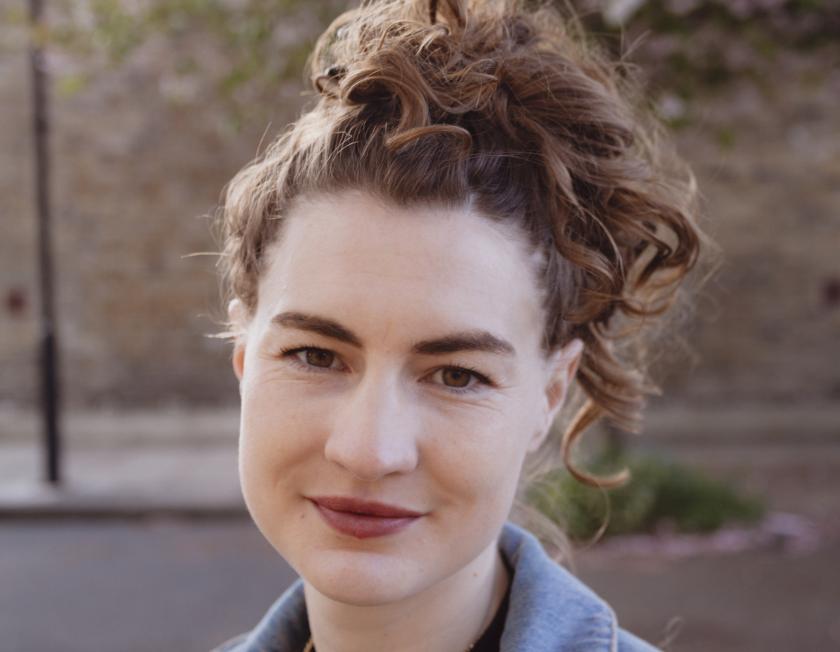





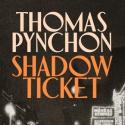





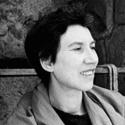
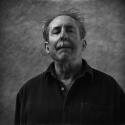
Add comment